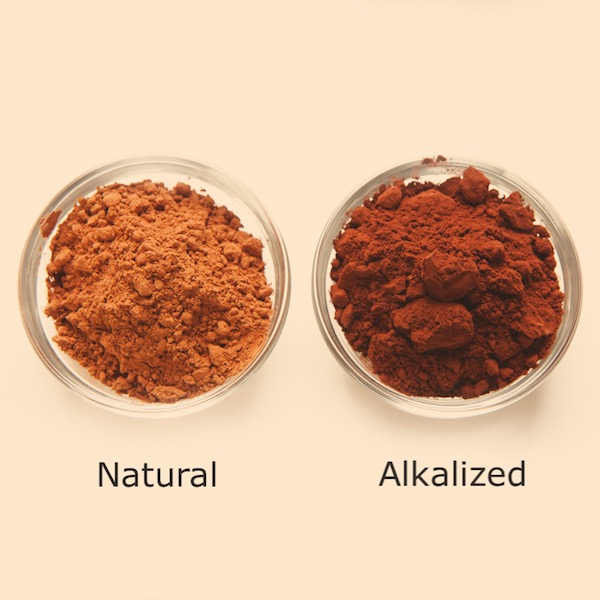Types of Cocoa Powder
Chocolate recipes often specify either natural or alkalized cocoa powder as an ingredient. Do you know the difference between these two types of cocoa powder?
Cocoa powder is the dry residual fibre left after the extraction of cocoa butter from the cocoa beans. When simply pressed and ground, it is called natural cocoa powder. Natural cocoa powder is highly acidic and does not dissolve in milk or water easily. To solve this problem, the 19th century Dutch chemist, Coenraad Johannes van Houten, devised a method to treat cocoa with alkali salts. This type of cocoa is called Dutch-process or alkalized cocoa. Alkalized cocoa powder is fluffier, and has a deeper colour and a more palatable taste than natural cocoa.
Both types of cocoa powder have distinct flavour profiles and niche uses in the culinary world. In recipes that use baking soda, natural cocoa powder is preferred, since its acidity creates the right leavening environment for the batter to rise. Alkalized cocoa powder is preferred where water solubility is important, such as in hot cocoa and other chocolate drinks.
If you come across a baking recipe that does not specify which type of cocoa powder to use, the best way to decide is to see whether the recipe uses baking powder or baking soda. If the recipe is mostly leavened by baking powder, use alkalized cocoa powder. If it uses baking soda, then natural cocoa powder would be the way to go.


